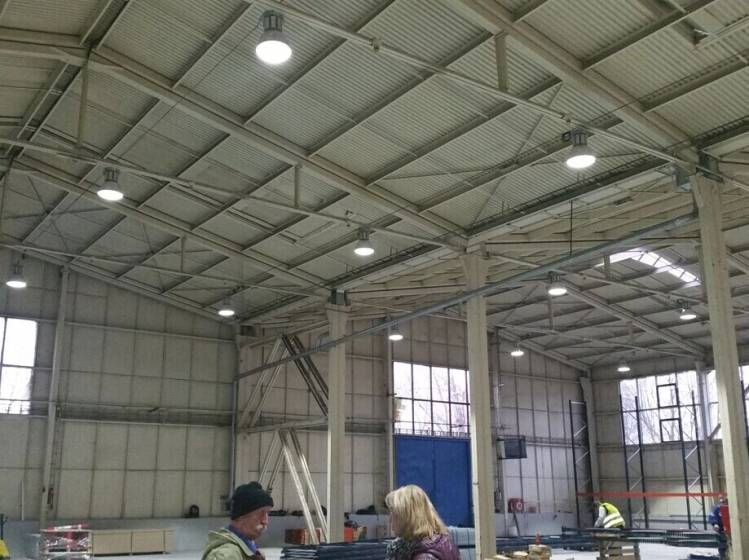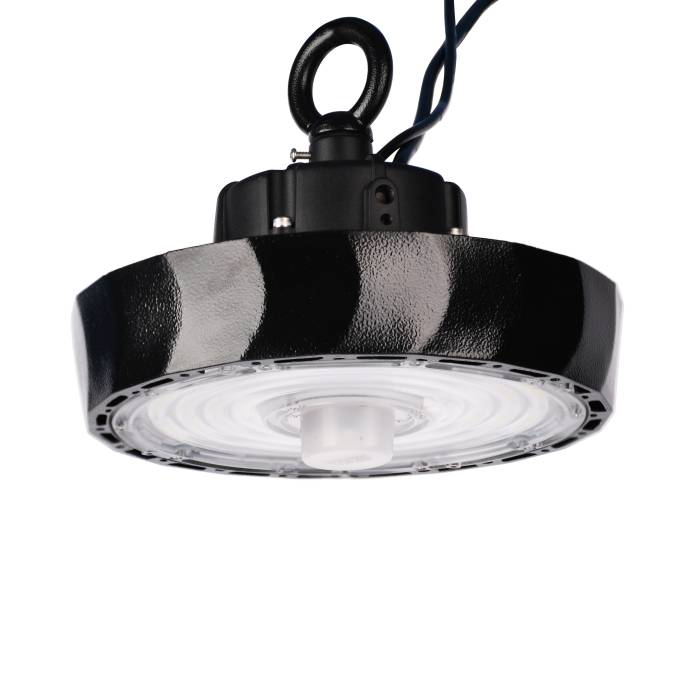LED high bay lighting provides an excellent cost-effective and energy-efficient alternative to traditional fluorescent lighting. Many large industrial spaces have historically used metal halide lamps, high or low pressure sodium lamps, and fluorescent lamps. Now industrial LED high bay lighting is obviously superior to these traditional lighting fixtures in many aspects. The following is a detailed analysis for you:
1. Cost
Although the upfront cost of LED high bay lights is relatively high, the long lifespan makes them cost-effective. Metal halide lamps are expensive to buy and expensive to maintain. Fluorescent lamps are cheap initially but require specialist handling, which means additional costs.
2. Life expectancy
The ideal lifespan of LED high bay lights can reach 50,000 hours, 4-40 times longer than most alternatives. Metal halide lamps require frequent replacement and need to be replaced before the end of their useful life. Fluorescent lamps have a shorter lifespan (when turned on and off repeatedly).
3. Maintenance
Long life LED high bay means less maintenance and fewer parts. Metal halide lamps have short lifespans and require regular maintenance, high-pressure or low-pressure sodium lamps contain toxic elements that require expert handling and disposal, and fluorescent bulbs may need to be replaced before they fail due to flickering or color change.
4. Efficiency
LED high bays consume less energy to achieve the same output as other bulbs, and the directional light output (120° or less) prevents light from being wasted in unnecessary areas compared to the standard 360° output of other bulbs. A lot of the energy produced by metal halide lamps is wasted as heat, the lamps take time to warm up and therefore cannot be turned on and off on demand, wasting light due to the omnidirectional (360°) output. Fluorescent lamps are quite energy efficient and are only hindered by omnidirectional output.
5. Stability
The LED high bay light has a stable light without flickering. Metal halide lamps are prone to flickering, high-pressure or low-pressure sodium lamps flicker when they reach the end of their useful life, ballasts emit an audible hum when fluorescent lamps fail, and light flickering and cycling are common.
6. Dimmable light
LED high bay lights are easily dimmed with a compatible LED dimmer switch. Metal halide lamps can be dimmed with electric or magnetic ballasts, but this changes the quality of the light and reduces efficiency. High-pressure or low-pressure sodium lamps can be dimmed manually, but will alter the quality of the light and may cause the bulb to fail prematurely. Fluorescent Lighting Newer fluorescent bulbs can dim effectively and require a ballast for dimming.
7. Safety aspects
LED high bay lights are resistant to damage caused by physical shocks. Metal halide light bulbs risk explosion when they fail, are fragile, contain mercury, and require professional handling and disposal. High-pressure or low-pressure sodium lamps contain toxic mercury and require professional handling and disposal, or they may start a fire. Broken bulbs of fluorescent lamps contain mercury in the glass, but small amounts are released as a gas that requires specialist handling and disposal.
Compared with metal halide lamps, high-pressure or low-pressure sodium lamps and fluorescent lamps, LED high bay lamps have various advantages, which is why more and more people prefer and choose LED high bay lamps. , LED high bay lights are gradually replacing traditional lighting fixtures and are widely used in larger industrial fields.






